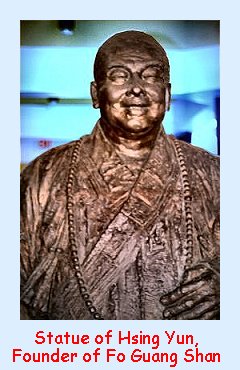


CONTRIBUTE TO OUR DISCUSSION FORUM!
Free Forums by Bravenet.com

Page 1

A Few Words of Clarification
As we are heading for an understanding of Pure Land Buddhism, let's try to keep from getting lost too fast by stating the following basic assumptions. We will return to all four of these points, as we will move along, hopefully at a reasonable pace. Still, a few preliminary remarks on where we're heading will hopefully help us to stay on course.

However, neither Honen nor Shinran created the idea of the Pure Land or the fundamental doctrines on which it is based. The notion of a Pure Land, as well as its importance, goes back at least as far as the time of Nagarjuna (ca. 150-250 AD) and probably earlier. So, when we get started with recounting the story of Pure Land Buddhism, we also need to revisit those early times. Having done so, the eventual appearance of independent Pure Land schools will make greater sense in their historical context. It is, of course, of paramount importance that we refrain from reading the beliefs of the later Japanese schools into the doctrines of the Pure Land as they developed a millennium earlier, first in India, then in China
 There are a number of "humanistic" orders of Mahayana Buddhism that originated in the twentieth century and are attempting to reach out to a large contemporary audience by emphasizing present concerns and aspirations. Thus, they are focusing on this-worldly goals far more than has been the case for most Buddhist schools in the past. A prominent idea advocated by these innovators is that of "creating a Pure Land on earth," viz. to make this planet an all-around better place to live by proactively addressing environmental and social issues. A case in point is the order of Fo Guang Shan, headed up by Hsin Yun. I need to stress that, regardless of whether it is good Buddhism or not, this focus on a Pure Land on Planet Earth is out of sync with how the Pure Land had been understood until recently. If we do not recognize that distinction, we are bound to get lost when trying to read contemporary Pure Land literature. The more traditional view, which is still also heavily maintained today, has insisted that, if the Pure Land were not remote from our current space and time, its existence would be pointless because it would still have to be subject to the same hindrances to enlightenment that we are experiencing now. My point is not that one is better than the other; I cannot pass judgment on their respective truth within the boundaries of Buddhism. However, I can say that they differ in substance and that they are historically incompatible with each other.
There are a number of "humanistic" orders of Mahayana Buddhism that originated in the twentieth century and are attempting to reach out to a large contemporary audience by emphasizing present concerns and aspirations. Thus, they are focusing on this-worldly goals far more than has been the case for most Buddhist schools in the past. A prominent idea advocated by these innovators is that of "creating a Pure Land on earth," viz. to make this planet an all-around better place to live by proactively addressing environmental and social issues. A case in point is the order of Fo Guang Shan, headed up by Hsin Yun. I need to stress that, regardless of whether it is good Buddhism or not, this focus on a Pure Land on Planet Earth is out of sync with how the Pure Land had been understood until recently. If we do not recognize that distinction, we are bound to get lost when trying to read contemporary Pure Land literature. The more traditional view, which is still also heavily maintained today, has insisted that, if the Pure Land were not remote from our current space and time, its existence would be pointless because it would still have to be subject to the same hindrances to enlightenment that we are experiencing now. My point is not that one is better than the other; I cannot pass judgment on their respective truth within the boundaries of Buddhism. However, I can say that they differ in substance and that they are historically incompatible with each other. *****
1The Wikipedia articles on specific eras in Japanese history provide a sidebar that gives a quick overview of the periods of Japanese history. It also supplies a more detailed outline as a separate article. The article unnecessarily points out that it is unlikely for such a timeline ever to be considered "complete" by everyone. It supplies much helpful material for the non-specialist. Back to text.
TENTATIVE TABLE OF CONTENTS

